Hey there, neighbor! So, you’re curious about compost toilets, huh? They’re a fantastic eco-friendly option, but sometimes, a little… whiff… can pop up. Don’t worry! Dealing with compost toilet odor is totally manageable.
Think of me as your friendly guide, here to walk you through simple, effective ways to keep things fresh and odor-free. We’ll tackle this together, step-by-step, so you can enjoy the benefits of your compost toilet without any stinky surprises. Ready to learn the secrets to effortless control?
Compost Toilet Odor: Busting the Myth of the Smelly Throne
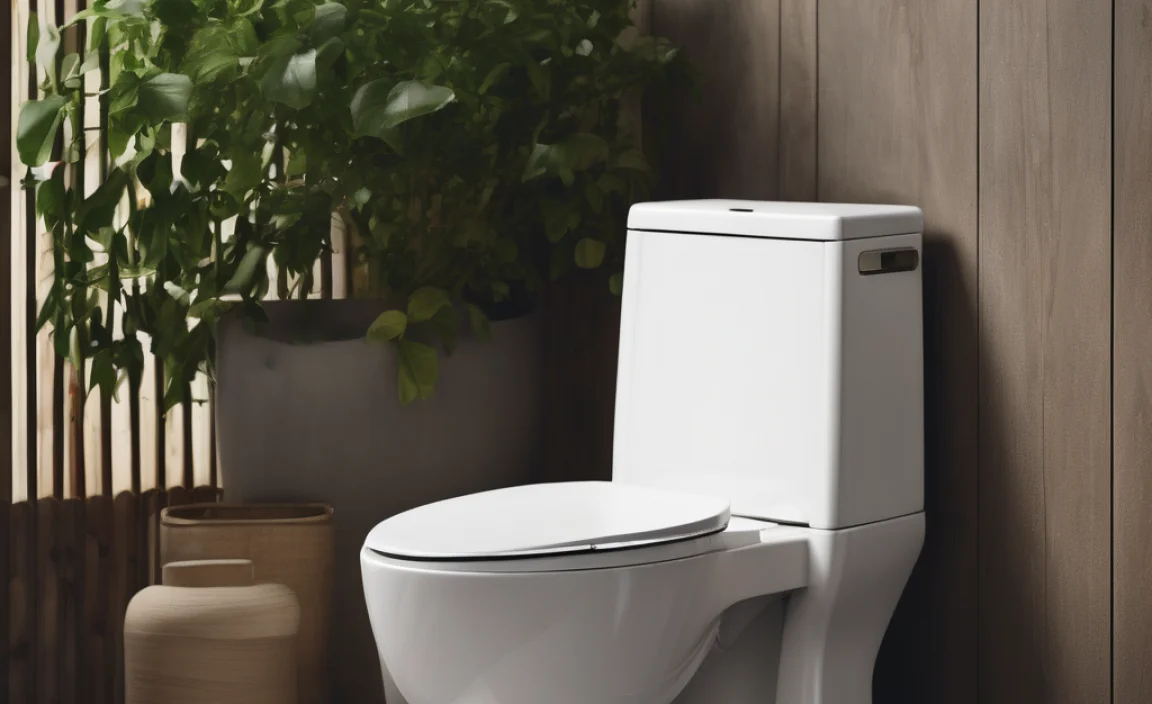
Let’s get one thing straight: a well-managed compost toilet odor is a myth that needs busting! It’s easy to think that nature’s calling in a composting toilet automatically means a strong smell. But that’s just not true. The goal of a properly functioning compost toilet is to dry out and decompose waste, not let it sit and get funky.
When you hear about smelly compost toilets, it’s usually a sign something in the system isn’t quite balanced. The great news is, you have the power to fix it, and it’s not complicated at all! Think of it like this: composting itself is all about breaking down organic material. Doing it right means encouraging beneficial microbes to do their work aerobically (with oxygen).
When things smell bad, it typically means they’re going anaerobic (without oxygen), and that’s where those less-than-pleasant odors come from. The good news? We can easily steer things back to the aerobic side. This article is your all-in-one guide to understanding why odors happen and, more importantly, how to prevent and eliminate them with simple, practical solutions.
Understanding the Source: Why Does Compost Toilet Odor Happen?
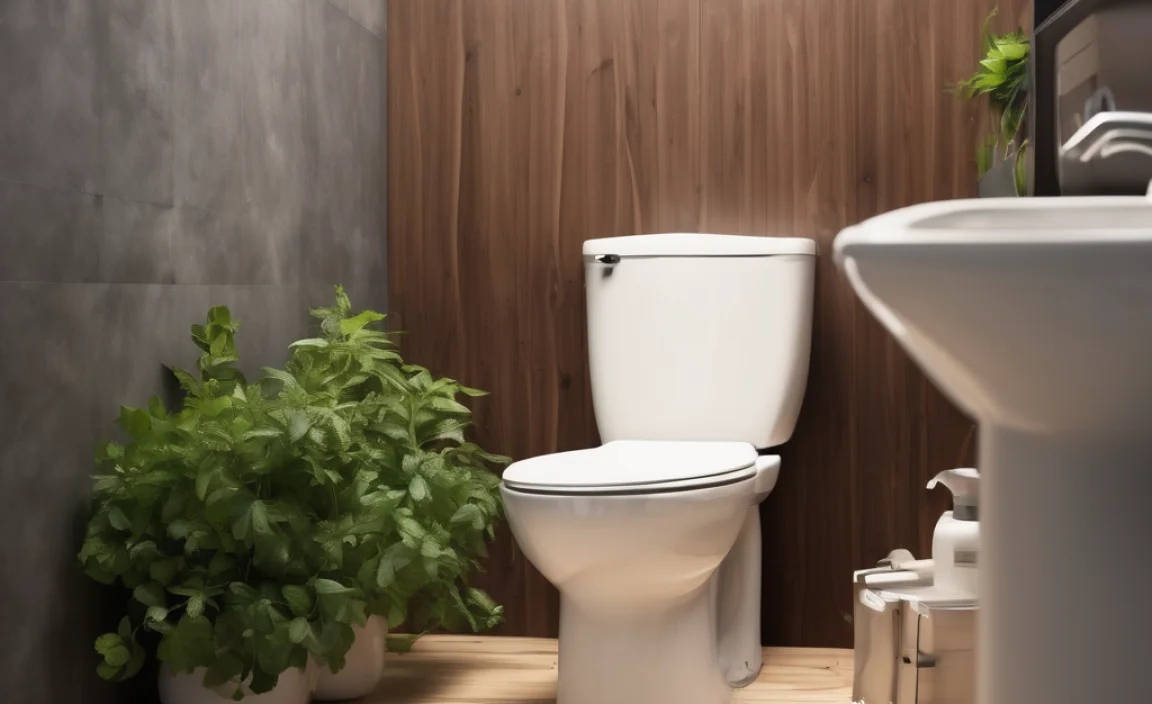
Before we jump into solutions, let’s quickly chat about why those unexpected smells might appear. Knowing the ‘why’ makes ‘how to fix it’ so much easier!
- Too Much Moisture: This is the big one. If there’s too much liquid (from urine or inefficient drying), your compost pile can become waterlogged. This creates anaerobic conditions, which leads to that sulfuric, rotten-egg smell.
- Lack of Bulking Material: Compost operates on a balance of “greens” (nitrogen-rich, like urine) and “browns” (carbon-rich, like sawdust or peat moss). If you don’t add enough browns, the system can become too ‘green’ and damp, leading to odors.
- Insufficient Ventilation: A compost toilet needs air to breathe! If the air vent is blocked or too small, oxygen can’t circulate properly, again encouraging anaerobic conditions.
- Infrequent Emptying: While they’re designed to compost, leaving waste in the collection bin for too long without proper management can overwhelm the system and lead to smells.
- Type of Toilet System: Different compost toilets work in slightly different ways. Some are designed for ultra-fast composting, while others rely more on decomposition over time. Understanding your specific model helps in managing it.
The goal is always to keep things dry and aerobic. It’s a surprisingly simple science, and once you grasp it, controlling odor becomes almost automatic.
Genius Solutions: Effortless Compost Toilet Odor Control
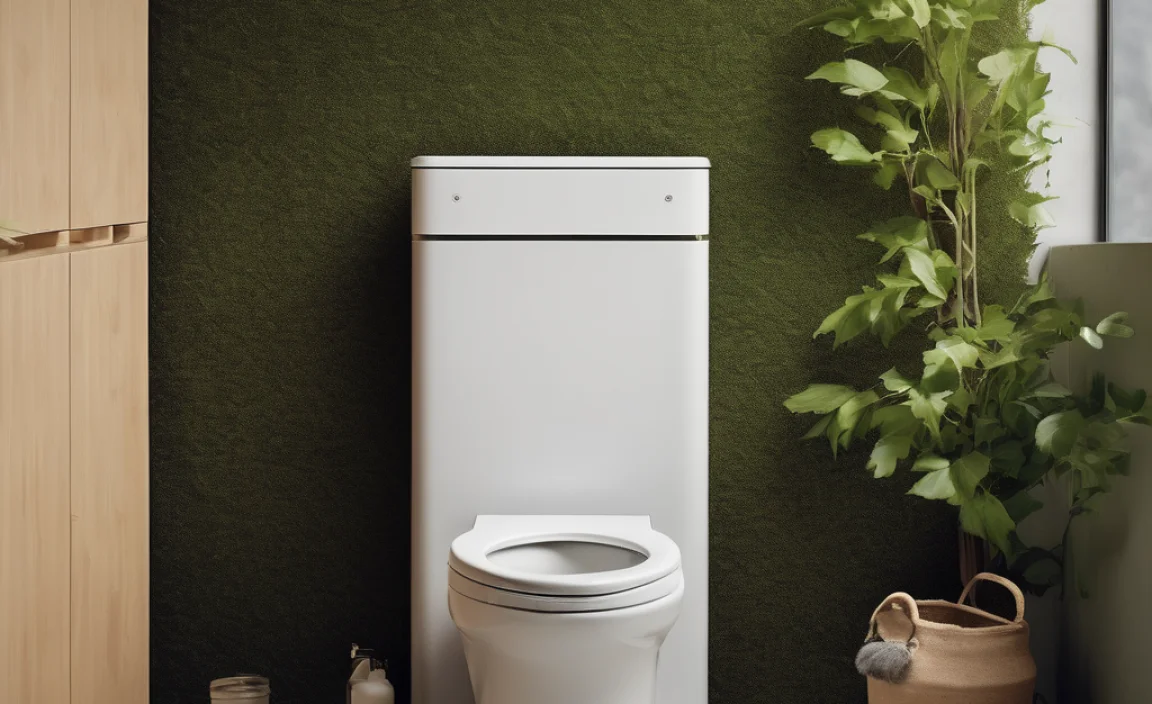
Alright, let’s get down to business! Here are the most effective and beginner-friendly ways to tackle compost toilet odor head-on. These are proven methods that real people use every day.
1. Master the “Browns” – Your Odor-Fighting Champions
This is arguably the most crucial step. Think of “browns” as the absorbent material that soaks up moisture and provides the carbon your compost needs. After every use, you want to add a scoop of this goodness.
What to Use:
- Sawdust: This is a popular choice. Use fine to medium sawdust from untreated wood (like pine, fir, or cedar). Avoid pressure-treated lumber, as it can contain chemicals.
- Peat Moss: Excellent for absorption and also balances the pH nicely.
- Coconut Coir: A sustainable option that’s super absorbent.
- Shredded Leaves or Straw: Great if you have them readily available from your garden! Just make sure they’re dry.
How Much? Aim for a generous handful or two after each deposit. It should cover the waste completely, especially any urine. You’ll get a feel for the right amount over time. If it smells, add more browns!
2. Ensure Proper Ventilation: Let Your Toilet Breathe!
A compost toilet needs fresh air to keep the aerobic decomposition process going strong. This means a good vent system.
- Check Your Vent Pipe: Make sure it’s clear of obstructions like cobwebs, leaves, or snow. A simple inspection now and then is all it takes.
- Fan Power (Optional): Many composting toilets come with or can be fitted with a small, low-voltage fan in the vent line. These are incredibly effective at ensuring constant airflow and drastically reducing any chance of odor escaping into the bathroom. You can find these at most composting toilet supply stores or online. For an example of good ventilation systems, check out resources from the EPA on composting toilets.
- Ventilation from the Bathroom: Ensure your bathroom itself is reasonably well-ventilated. An open window or an exhaust fan can help prevent any residual moisture or potential odors from lingering.
3. Manage Moisture Levels: The Key to Aerobic Success
As we touched on, too much moisture is the enemy of odor-free composting. The bulking material (your browns) does most of this work, but here are a few extra tips.
- Separate Urine (if your system allows): Some advanced composting toilets have a “urine diverting” feature. This separates liquid from solids, which significantly reduces odor and moisture in the solid waste compost. If you have this option, make sure it’s working correctly.
- Don’t Over-Flush with Water: If your system uses a small amount of water for flushing, be conservative. Excessive water will just create more moisture to evaporate or be absorbed.
- Consider a ‘Drainage’ System (Advanced): For some off-grid setups, managing the liquid output is key. Properly managing this liquid is integral to the overall system balance.
4. Regular Maintenance & Emptying: Keeping It Running Smoothly
Even the best composting toilet needs attention now and then.
- Emptying the Solids Bin: Follow your manufacturer’s instructions for how often to empty the solids chamber. It’s better to empty it a little before signs of odor appear than to wait until a problem develops.
- Additives (Use Sparingly): Some people like to add a scoop of finished compost or a special composting activator to the solids bin. This introduces beneficial microbes to kickstart the process. Use high-quality compost activators designed for composting toilets, or even plain baking soda in small amounts can help absorb odors.
- Cleaning: Keep the toilet bowl and surrounding areas clean. Use natural, biodegradable cleaners.
5. Troubleshooting Common Smells
Even with the best efforts, you might encounter a smell. Here’s a quick guide:
| Type of Smell | Likely Cause | Quick Fix |
|---|---|---|
| Sulfuric / Rotten Egg Smell | Too much moisture, anaerobic conditions. | Add more dry “browns” generously. Check vent is clear. Ensure bathroom fan is on. |
| Ammonia Smell | Too much urine (nitrogen) and not enough “browns” (carbon). | Add a lot more carbon-rich “browns.” Ensure urine diversion (if applicable) is working. |
| General “Funky” Smell | Imbalance in the system, possibly needs more air or a better mix. | Add browns, ensure ventilation, check for blockages in vent or fan. Consider emptying solids bin if it’s getting very full. |
Remember, these smells are usually temporary and a sign that your system needs a little adjustment. The key is to act quickly!
The Best Materials for Your Compost Toilet: A Quick Guide
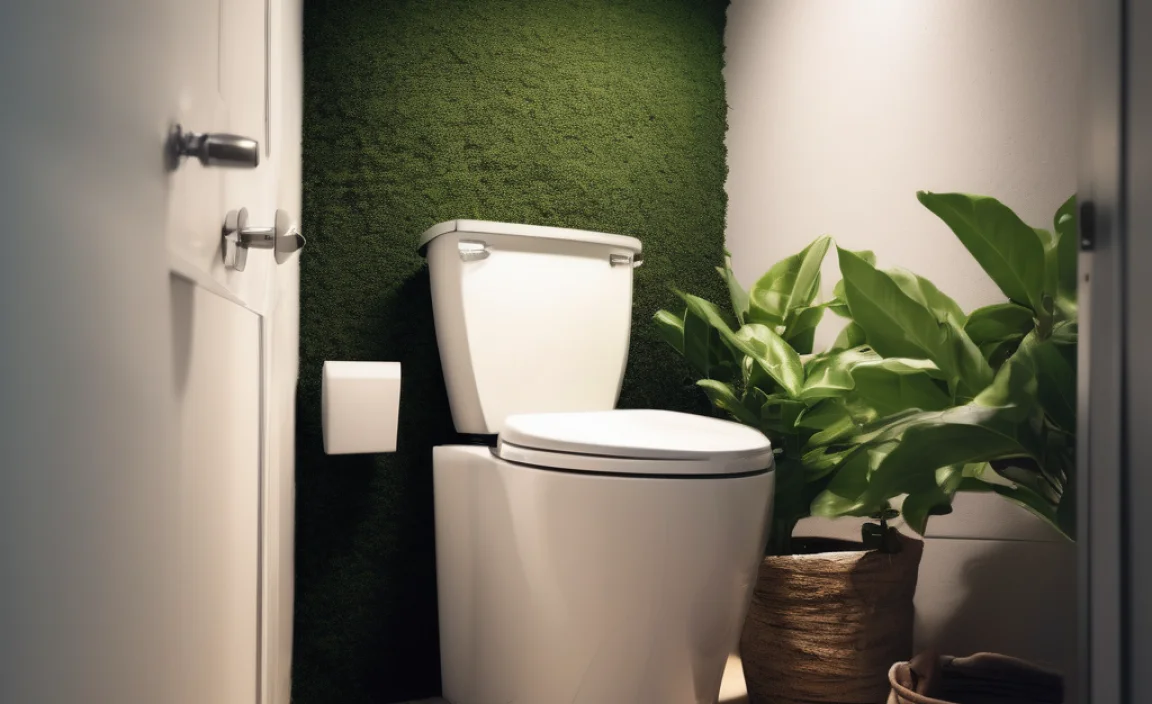
Choosing the right materials for your compost toilet system is vital for both effective composting and odor control. Here’s a breakdown of commonly used and highly recommended materials for your “browns” and for maintaining your system.
1. For “Browns” (Bulking Material)
These materials are carbon-rich and essential for absorbing moisture and providing a balanced environment for decomposition.
- Sawdust: As mentioned before, excellent choice. Aim for untreated wood sawdust. Pine, fir, and cedar are great. The finer the sawdust, the better it mixes and absorbs.
- Peat Moss: A fantastic natural absorbent. It holds onto moisture well and also helps to regulate the pH of the compost.
- Coconut Coir (or Coco Coir): A sustainable fiber derived from coconut husks. It’s highly absorbent and a good alternative to peat moss if sustainability is a major concern.
- Shredded Leaves: Dry, fallen leaves from deciduous trees are a good source of carbon. Ensure they are completely dry before using.
- Straw: Chopped straw is also a good carbon source. Like leaves, make sure it’s dry.
What to Avoid for Browns:
- Sawdust from treated lumber (contains chemicals).
- Sawdust from oily woods like redwood or cedar in very large quantities, as their natural oils can sometimes inhibit microbial activity if overused. Small amounts are fine.
- Green grass clippings: These are too high in nitrogen and can lead to a wet, smelly pile if not balanced with a lot of carbon.
2. For Maintenance and Odor Absorption
Beyond the daily browns, these can help keep things extra fresh.
- Baking Soda: A time-tested, natural odor absorber. A sprinkle in the solids bin can make a difference.
- Activated Charcoal (Zeolite Products): High-tech solutions are available that use activated charcoal or zeolite granules. These are porous materials that trap odor molecules very effectively. You can often add these directly into the solids chamber or mix them with your bulking material. For more information on effective odor absorption, you can research the adsorption properties of activated carbon.
- Compost Activator: These are commercially produced mixes designed to introduce beneficial microbes and nutrients to speed up the composting process and promote aerobic activity, thus reducing odors.
3. Cleaning Agents
When cleaning the toilet, opt for eco-friendly solutions.
- Vinegar and Water Solution: A simple, natural disinfectant and deodorizer.
- Biodegradable Soaps: Use gentle, eco-friendly soaps for cleaning the bowl and surrounding areas.
The general principle is to have easily accessible storage for your chosen “browns.” A small bin or container next to the toilet is perfect. Regularly replenish your supply so you never run out!
The Composting Toilet Odor Control Checklist: Your Simple Action Plan
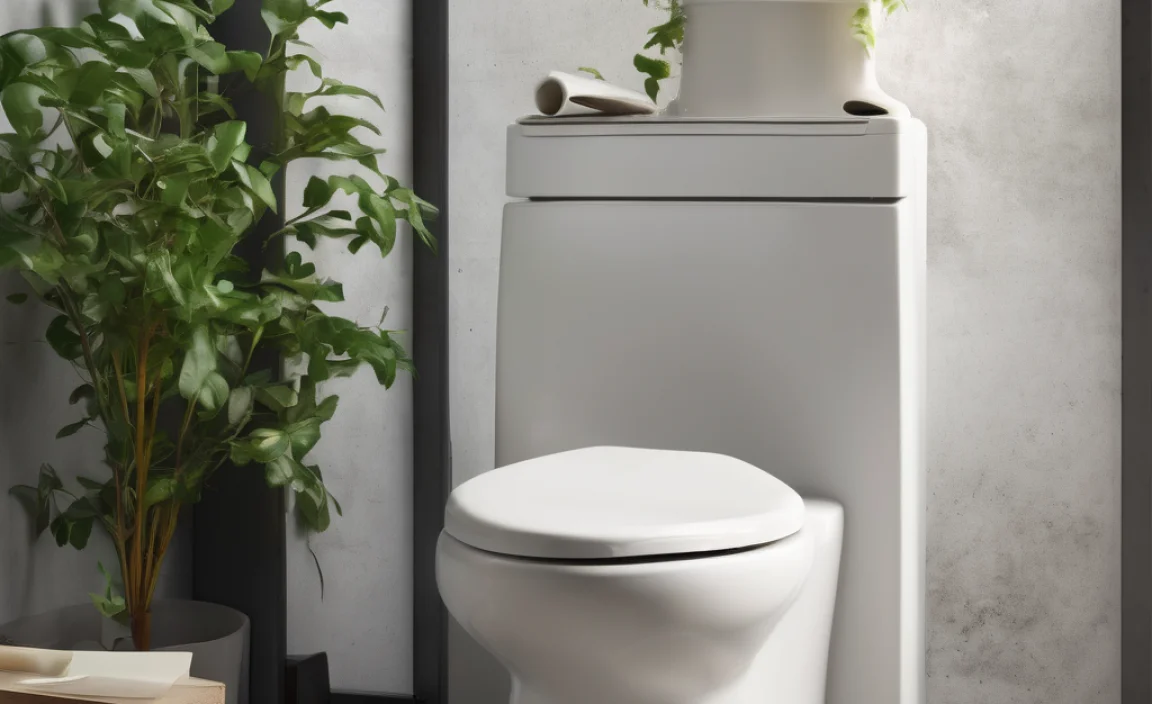
Here’s a handy checklist to help you stay on top of your compost toilet maintenance and keep odors at bay. Think of this as your quick reference guide!
Daily Tasks:
- [ ] Add a generous scoop of “browns” (sawdust, peat moss, etc.) after every use. Ensure all solids and liquids are covered.
- [ ] If your bathroom has a dedicated exhaust fan, ensure it’s running during use and for a while afterward.
- [ ] Check that the toilet lid seals properly when closed.
Weekly Tasks:
- [ ] Inspect the vent pipe for any visible blockages (insects, debris).
- [ ] Check “browns” supply and replenish if needed.
- [ ] If using an electric fan, ensure it’s operating correctly.
- [ ] Lightly clean the toilet bowl if needed.
Monthly Tasks:
- [ ] Deeper clean of the toilet area.
- [ ] Check the main solids collection bin (if accessible without full emptying) for moisture levels. Add more browns if it seems too wet.
- [ ] Review your “browns” usage. If you’re consistently needing a lot, you might need to adjust your technique or supply.
As Needed/Periodic Tasks:
- [ ] Empty solids collection bin as per manufacturer’s recommendations.
- [ ] Add composting activator or a small amount of baking soda if any slight odors arise.
- [ ] Ensure the external vent cap is clear (especially in areas with snow or heavy debris).
This checklist is designed to be simple and effective. It focuses on prevention by maintaining the balance and airflow that are key to an odor-free system. By regularly performing these simple checks and tasks, you’ll build confidence and ensure your compost toilet is always a pleasant feature of your home.
Compost Toilet Systems: How They Impact Odor
It’s worth mentioning that not all compost toilets are created equal, and the type you have can influence how odor is managed. While the core principles of managing moisture, carbon, and airflow remain, different designs have unique characteristics.
Here’s a quick look at common types and how they relate to odor:
| Compost Toilet Type | Mechanism for Odor Control | Potential Odor Considerations |
|---|---|---|
| Self-Contained / Non-Diverting | Relies heavily on adding bulking material (“browns”) after each use to absorb moisture and odor. Ventilation is critical. | Requires diligent adding of browns. If moisture isn’t managed or ventilation fails, odors can build up. Emptying frequency is key. |
| Waterless (Dry) with Urine Diversion | Separates liquid from solid waste. Solids are then composted with added browns. Urine is drained away separately. | Significantly reduces moisture in the solids chamber, leading to less odor and faster decomposition of solids. Urine needs proper management to avoid its own odors. |
| Central Composting Systems (Batch System) | Waste is deposited through a chute into a large, central composting chamber below the toilet seat. These often have robust ventilation. | Can handle large volumes. Odors are typically managed by excellent ventilation and the large composting mass. Emptying ‘batches’ can be less frequent but requires more effort. |
| Incinerating Toilets | Burns waste at high temperatures. | Essentially eliminates odor by destroying waste. However, it uses significant energy (electricity or gas) and requires a vent for combustion byproducts. Not a true ‘composting’ toilet but an alternative for odor-free waste disposal. |
| Composting Systems with Fans | Utilizes an electric fan to actively draw air through the solids and vent it outside. | Excellent for promoting aerobic decomposition and actively removing any potential odors from the bathroom space, even if there’s a temporary system imbalance. They generally offer the best odor control for active use. Utah State University Extension provides good guidelines on managing composting toilet systems. |
No matter what type of system you have, the fundamental principles of balancing moisture, carbon (browns), and oxygen (ventilation) are your best friends in preventing compost toilet odor. If you have a system with urine diversion, the risk of odor is already significantly lowered, but diligent use of browns for the solids is still essential.
Frequently Asked Questions About Compost Toilet Odor
Here are some common questions beginners have about keeping their compost toilet smelling fresh.
Q1: Will I constantly smell the compost toilet if I have one?
No, not if it’s managed properly! The goal of a compost toilet is to dry and decompose waste without odor. A strong smell usually indicates an issue like too much moisture, not enough carbon material (“browns”), or poor ventilation. With good management, it should be as odor-free as a conventional toilet.
Q2: How often should I add “browns” (like sawdust)?
The general rule is to add “browns” after every single use. A generous scoop or two should be enough to cover the waste. This helps absorb moisture and neutralizes odors right away.
.lwrp.link-whisper-related-posts{
margin-top: 40px;
margin-bottom: 30px;
}
.lwrp .lwrp-title{
}.lwrp .lwrp-description{
}
.lwrp .lwrp-list-container{
}
.lwrp .lwrp-list-multi-container{
display: flex;
}
.lwrp .lwrp-list-double{
width: 48%;
}
.lwrp .lwrp-list-triple{
width: 32%;
}
.lwrp .lwrp-list-row-container{
display: flex;
justify-content: space-between;
}
.lwrp .lwrp-list-row-container .lwrp-list-item{
width: calc(25% – 20px);
}
.lwrp .lwrp-list-item:not(.lwrp-no-posts-message-item){
max-width: 150px;
}
.lwrp .lwrp-list-item img{
max-width: 100%;
height: auto;
object-fit: cover;
aspect-ratio: 1 / 1;
}
.lwrp .lwrp-list-item.lwrp-empty-list-item{
background: initial !important;
}
.lwrp .lwrp-list-item .lwrp-list-link .lwrp-list-link-title-text,
.lwrp .lwrp-list-item .lwrp-list-no-posts-message{
}@media screen and (max-width: 480px) {
.lwrp.link-whisper-related-posts{
}
.lwrp .lwrp-title{
}.lwrp .lwrp-description{
}
.lwrp .lwrp-list-multi-container{
flex-direction: column;
}
.lwrp .lwrp-list-multi-container ul.lwrp-list{
margin-top: 0px;
margin-bottom: 0px;
padding-top: 0px;
padding-bottom: 0px;
}
.lwrp .lwrp-list-double,
.lwrp .lwrp-list-triple{
width: 100%;
}
.lwrp .lwrp-list-row-container{
justify-content: initial;
flex-direction: column;
}
.lwrp .lwrp-list-row-container .lwrp-list-item{
width: 100%;
}
.lwrp .lwrp-list-item:not(.lwrp-no-posts-message-item){
max-width: initial;
}
.lwrp .lwrp-list-item .lwrp-list-link .lwrp-list-link-title-text,
.lwrp .lwrp-list-item .lwrp-list-no-posts-message{
};
}

I am passionate about home engineering. I specialize in designing, installing, and maintaining heating, ventilation, and air conditioning systems. My goal is to help people stay comfortable in their homes all year long.

